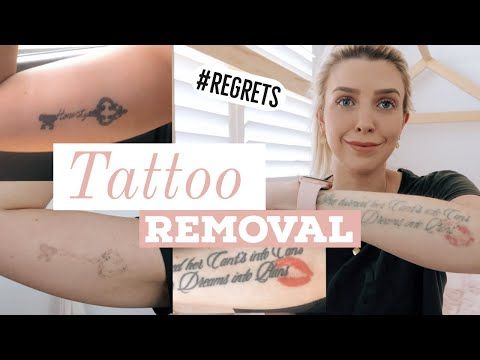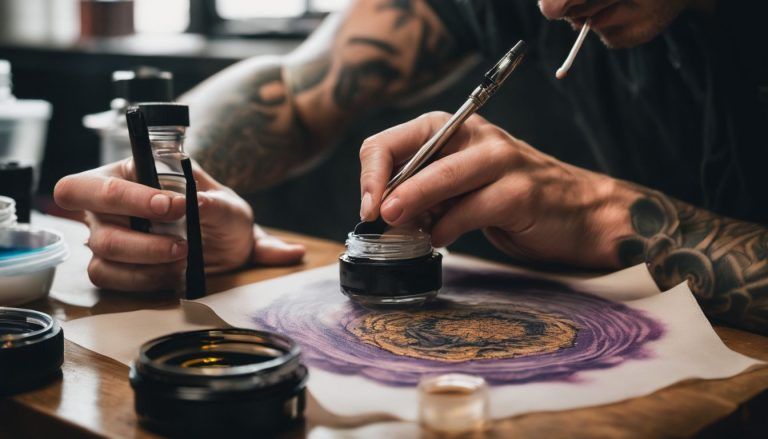The Best Timeframe for Getting Tattoos After Removal
Deciding when to get a new tattoo after removing an old one can be tricky. Laser tattoo removal has come a long way, allowing for safer and more effective ink reduction. This article guides you through the ideal waiting periods ensuring your skin is ready for fresh ink.
Keep reading to find out the best time frame that protects your skin’s health!
Key Takeaways
- Wait 6 weeks to 6 months after laser tattoo removal before getting a new tattoo to ensure the skin heals properly and is ready for fresh ink.
- Newer laser technologies, like Q – switched and picosecond lasers, make tattoo removal more effective with shorter recovery times.
- Schedule a free consultation with a laser removal expert before starting your new tattoo journey to discuss personalized care and cost-effective options.
- Consider long – term side effects such as potential scarring or uneven texture when planning to cover up old tattoos with new designs.
- Follow specific aftercare instructions post-tattoo removal to aid healing, including keeping the area clean and dry, avoiding direct sunlight, applying sunscreen, using prescribed ointments or creams, and not picking at scabs.
Understanding Tattoo Removal
Laser tattoo removal is a widely used method for removing unwanted tattoos, with advancements in technology making the process more effective and less risky. It’s important to understand the risks and considerations involved before undergoing the procedure.
What is Laser Tattoo Removal?
Laser tattoo removal is a process that breaks down the ink in tattoos so your body can get rid of it. A high-powered laser sends light energy into your skin, hitting the tattoo pigment.
Over time and several treatments, this zaps the ink into smaller pieces until they’re small enough for your immune system to flush away. The treatment aims to make the tattoo less visible or erase it completely.
Each session takes place six to eight weeks apart, giving your skin enough time to heal properly. With every treatment, you see more of the unwanted ink disappear, but patience is key—it can take one to two years for most people to see significant fading.
Specialists tailor sessions based on how much progress has been made; sometimes spacing them ten to twelve weeks apart once 70% of the tattoo has faded. This careful approach helps ensure better outcomes and keeps your skin as smooth as possible after removal.
Advancements in Laser Technology
With the continuous advancements in laser technology, tattoo removal procedures have become more efficient and less invasive. Newer laser technologies, such as Q-switched lasers and picosecond lasers, have significantly improved the effectiveness of tattoo removal by targeting a wider range of ink colors and breaking down pigment particles into smaller fragments for easier elimination by the body.
Additionally, these technological advancements have led to reduced recovery times and minimized risk of scarring or skin damage compared to older laser technologies. The ability of newer lasers to deliver shorter pulses at higher energy levels allows for faster treatment sessions while effectively minimizing discomfort during the process.
These advancements in laser technology have revolutionized the tattoo removal industry, offering individuals greater confidence in removing unwanted tattoos with minimal adverse effects.
Risks and Considerations
After understanding the advancements in laser technology, it is important to consider the risks and considerations before undergoing tattoo removal. Waiting periods between treatments are crucial for allowing the skin to heal properly, reducing the risk of scarring and ensuring optimal results.
Additionally, following aftercare instructions diligently can help minimize potential side effects and complications. It’s essential to consult with a dermatologist or laser tattoo removal expert to understand individualized risks based on skin type, ink color, and tattoo location.
Careful consideration of these factors can significantly impact the final outcome of the tattoo removal process as well as future plans for getting a new tattoo over the treated area.
Waiting Periods for Getting a New Tattoo After Removal
After undergoing laser tattoo removal, it is recommended to wait anywhere from 6 weeks to 6 months before getting a new tattoo. This waiting period allows the skin to heal properly and reduces the risk of scarring or complications during the new tattoo process.
Special considerations should be taken for cover-up tattoos, and following aftercare instructions is crucial for optimal results.
6 weeks to 6 months recommended waiting period
After tattoo removal, it is crucial to wait at least 6 weeks before getting a new tattoo. This allows the skin to heal properly and reduces the risk of scarring or complications. Additionally, waiting for up to 6 months gives the skin ample time to fully recover and ensures optimal results for the new tattoo.
Following these recommended waiting periods is essential to achieve the best outcome for your new tattoo after removal. It is important not to rush this process as proper healing will contribute significantly to the final appearance of your new ink.
Next: Special considerations for cover-ups
Special considerations for cover-ups
When considering cover-ups for tattoos, it’s crucial to choose an experienced tattoo artist who specializes in this technique. Look for an artist with a portfolio showcasing successful cover-up work, especially with similar designs or colors.
Communicate openly about your expectations and concerns to ensure the best possible outcome. Additionally, consider the size and design of the new tattoo carefully to effectively conceal the old one while ensuring a visually appealing result.
It’s essential to remember that proper aftercare is vital for both the existing and new tattoos to promote healing and maintain their appearance over time.
Following aftercare instructions
After getting a tattoo removed, it’s crucial to follow specific aftercare instructions to ensure proper healing and minimize the risk of complications. Here are some important aftercare instructions to follow:
- Keep the treated area clean and dry to promote healing and prevent infection.
- Avoid exposing the treated skin to direct sunlight and apply sunscreen if necessary to protect the skin from damage.
- Use prescribed ointments or creams as directed by the tattoo removal specialist to aid in the healing process.
- Refrain from picking at scabs or peeling skin as this can lead to scarring and interfere with the healing process.
- Follow any additional post – treatment care instructions provided by your tattoo removal specialist for optimal results.
Pros and Cons of Tattooing Over a Removed Tattoo
Tattooing over a removed tattoo can provide a fresh start and cover up unwanted ink, but it may also lead to potential scarring or uneven skin texture – read on for more details!
Pros of tattooing over a removed tattoo
Covering up a removed tattoo with a new design offers a fresh start and the chance to create something beautiful on previously inked skin. Additionally, it allows individuals to turn an unwanted tattoo into a piece of art that they can be proud of.
With advancements in tattooing techniques and styles, individuals have the opportunity to transform their old tattoos into stunning pieces that reflect their current interests and personality.
Skin smoothness after removal can make for an ideal canvas for a new tattoo as it provides an even surface for precise and detailed artwork. In addition, the healing process from laser treatment often results in lighter shading, making it easier for cover-up tattoos to achieve vibrant colors without interference from previous designs or pigments.
Cons of tattooing over a removed tattoo
Tattooing over a removed tattoo can present some drawbacks. The skin may not be in its original condition, and scarring or texture irregularities from the removal process could affect the appearance of the new tattoo.
Additionally, there is a risk that ink from the new tattoo may not hold well on previously treated skin, potentially leading to patchy or uneven results. It’s important to carefully consider these potential issues before deciding to cover up a removed tattoo with a new one.
Tips for Saving Money on Tattoo Costs
Book a free consultation at your nearest removal clinic and consider long-term laser hair removal to save on tattoo costs. Read on to learn more about the best timeframe for getting tattoos after removal.
Book a free consultation
Schedule a complimentary consultation with a laser tattoo removal expert to discuss your specific needs and goals. During this session, the expert will evaluate your tattoo, skin type, and provide personalized recommendations tailored to your unique situation.
This consultation is an opportunity to ask questions about the process, expected timeline for results, potential risks, and aftercare instructions.
To take advantage of cost-effective options and receive personalized advice on covering up or re-tattooing over the treated area when it’s fully healed post-removal, booking a free consultation with a reputable clinic can be essential.
Find your nearest removal clinic
To find your nearest removal clinic, consider booking a free consultation with local laser tattoo removal specialists. Look for clinics that offer laser technology advancements to ensure effective and safe tattoo removal.
You can also search online for reputable removal clinics in your area and read customer reviews to make an informed decision based on the experiences of others who have undergone the process.
Consider visiting a removal clinic during fall or winter when cooler weather can aid in the recovery process. This may provide a more comfortable experience as you go through the stages of removing unwanted tattoos.
Considerations for long-term laser hair removal
Following the process of tattoo removal, it’s important to consider long-term effects and potential treatments. Long-term laser hair removal is an option for individuals who have completed their tattoo removal journey and are seeking a more permanent solution for unwanted hair.
The advancements in laser technology not only make it possible to remove tattoos effectively but also offer a safe and efficient method for long-term hair reduction. Unlike traditional methods, such as waxing or shaving, laser hair removal can provide lasting results, making it a popular choice for those looking for a low-maintenance approach to managing unwanted body hair.
Laser hair removal treatments typically require multiple sessions spaced apart over several weeks to target hair at different stages of growth. This allows the skin time to recover between treatments and ensures optimal results.
Conclusion
In conclusion, waiting at least 4-6 weeks before getting a new tattoo after removal is crucial for proper skin healing. The recovery process can be more comfortable during fall and winter due to the cooler weather.
Following this timeframe allows the body enough time to heal before starting a new tattoo journey. Laser experts recommend waiting 6-8 weeks after getting a new tattoo before considering removal.
Optimal results are achieved by following these recommended waiting periods between treatments.
FAQs
1. How long should I wait to get a new tattoo after laser removal?
Wait until the tattoo removal healing time is complete, which can vary but typically requires several months to ensure skin smoothness and reduce scar formation before getting a new tattoo.
2. Can I cover up my old tattoo right after removing it?
Covering up a tattoo with a new one immediately isn’t advised; allow your skin to heal from the laser tattoo removal process first to achieve the best final outcome for your new ink.
3. What factors affect the waiting period for a new tattoo after removal?
Several factors like how well you follow aftercare instructions, your overall health, and how quickly your skin recovers from any scarring or damage caused by laser removal will determine the waiting period for a new tattoo.
4. Will there be scarring if I get a new tattoo over an old one that’s been removed?
There might be some scarring left behind, but camouflaging tattoos can help in hiding those marks effectively as long as you give ample time for proper healing post-ink removal.
5. Is it possible to have laser hair removal treatments on an area where I’ve had a tattoo removed?
Yes, you can have laser hair removal on areas where tattoos were once located; however, make sure all ink has been appropriately faded and the region has fully healed from any previous treatments before proceeding.










